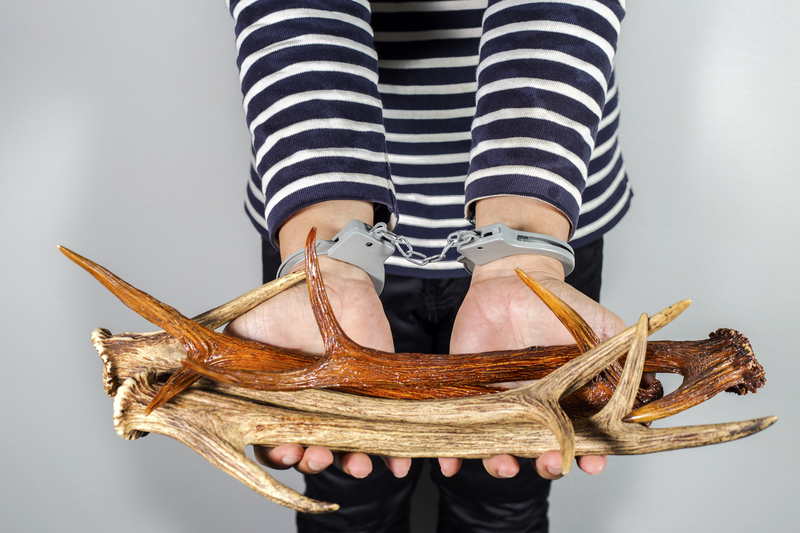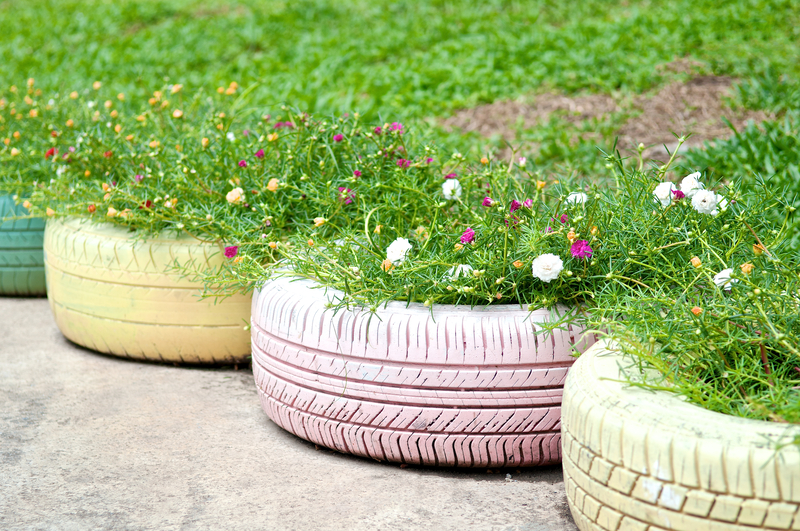Reducing Waste by Recycling Old Pots and Pans: An In-Depth Guide
In today's world, where sustainability and environmental consciousness are at the forefront, reducing waste by recycling old pots and pans has turned into an actionable solution for eco-friendly households. Not only does this process minimize landfill buildup, but it also provides creative and practical ways to upcycle or repurpose items once destined for the trash. This detailed article explores effective methods for the disposal, recycling, and reusing of old cookware, empowering you to make green choices in your kitchen and beyond.
Why Is Recycling Pots and Pans Important?
Kitchenware such as pots and pans often consists of valuable metals like aluminum, stainless steel, or copper. When these items are thrown away, they typically end up in landfills, where they can take centuries to decompose. Recycling cookware helps conserve natural resources, reduce the energy required to manufacture new products, and lessen environmental pollution.
- Conservation of Raw Materials: Recycling old cookware reduces the need to mine new metals and minerals.
- Energy Efficiency: Processing recycled metal uses significantly less energy than creating new metals.
- Decreased Landfill Waste: By choosing to recycle, you help minimize the amount of waste piling up in landfills.
- Lower Carbon Footprint: Recycling emits fewer greenhouse gases compared to the production of brand-new kitchen utensils.

Understanding Cookware Materials: Can All Pots and Pans Be Recycled?
Not all cookware is created equal. The type of material your pots and pans are made of will determine how you can recycle or reuse them. Here are some common types:
- Aluminum: Lightweight and common in cookware, aluminum is highly recyclable. Most municipal recycling centers accept it, provided it's clean.
- Stainless Steel: Durable and resistant to rust, stainless steel can also be recycled in most metal recycling facilities.
- Copper: Highly valued in recycling. Scrap metal yards often pay for old copper cookware.
- Nonstick-Coated Pans (Teflon, Ceramic): More challenging due to the coatings. Some recycling centers reject these, while others will accept them if the coating is removed or separated.
- Cast Iron: Very heavy but recyclable. It can be melted down and reused by specialized recycling companies or scrap yards.
Tip: Always check with your local recycling guidelines. While most metals are accepted, the presence of certain coatings or composite materials may require special handling.
How to Prepare Old Pots and Pans for Recycling
Before tossing your old cookware into the recycling bin, a little preparation can go a long way in ensuring proper recycling and avoiding contamination. Here are actionable steps:
- Clean Thoroughly: Wash off food and grease residue. Recycling facilities may reject dirty items.
- Remove Non-Metal Components: This includes plastic handles, silicone grips, or glass lids. Separate these to streamline metal recycling.
- Sort by Type: If possible, group your items by metal (aluminum, steel, copper) for easier processing at recycling centers.
- Contact Local Facilities: Ask your recycling center about specific requirements for pans with coatings or composite materials.
- Disassemble Where Necessary: Some pans may need to be taken apart for proper sorting and recycling.
Where and How to Recycle Old Cookware
Finding places to recycle or repurpose your old pots and pans might require a bit of research, but the process is easier than you might think.
1. Curbside Recycling Programs
Some municipalities allow the recycling of metal cookware through their regular curbside pickup. However, check the guidelines, as some may only accept metal cans or specified items.
2. Scrap Metal Recycling Yards
Scrap yards pay for valuable metals like copper, aluminum, and steel. This is an excellent option for heavier or specialty materials, though they usually require that all non-metal parts be removed first.
3. Donation Centers
If your cookware is still usable, consider donating it. Thrift stores, community organizations, and shelters often welcome gently used kitchenware. This extends the life of your items and helps those in need.
4. Manufacturer Take-Back Programs
Some cookware brands offer recycling or trade-in programs, accepting their old products for responsible disposal or recycling and sometimes offering discounts on replacements.
5. Household Hazardous Waste Collection
Nonstick or Teflon-coated pots may need to be disposed of through household hazardous waste programs due to the chemicals involved. Check with your local authorities.
Creative Ways to Reuse and Upcycle Old Pots and Pans
Sometimes, the best way to reduce waste is not to recycle, but to creatively reuse or repurpose your cookware. Let your imagination take over with these upcycling ideas:
- Planters: Old pots make quirky and durable containers for herbs, succulents, or flowers. Drill drainage holes for best results.
- Decorative Displays: Hang worn-out pans on the wall for a rustic kitchen look, or turn them into memo boards or clocks.
- Bird Baths or Feeders: Large pans can become garden bird baths or feeders, attracting feathered friends to your yard.
- Organizers: Use deep pots to corral craft supplies, tools, or other household items.
- Wind Chimes: Small pans and lids can be suspended to create musical, decorative wind chimes.
Remember: Upcycling is about extending the life of a product in a fun, functional way, reducing the environmental impact even further!
Frequently Asked Questions About Recycling Old Pots and Pans
Can Nonstick Pans Be Recycled?
Recycling nonstick pans can be tricky due to chemical coatings like Teflon. Some metal recycling facilities will accept these items if the coating is removed, but many do not.
Solution: Contact your local recycler for specific instructions. Alternatively, upcycle or donate if the item is in decent condition.
Is It Safe to Cook with Old Pots and Pans?
Over time, cookware can leach metals or chemicals, especially if the pan is heavily scratched, corroded, or damaged. If your kitchen equipment is showing signs of significant wear, it's safest to repurpose or recycle it rather than continue using it for food.
What About Ceramic and Glass Cookware?
These materials usually require specialized recycling centers, and cannot go in the curbside bin. If your local recycler doesn't accept ceramic or glass cookware, look for alternative disposal services or creative upcycling.
Do I Need to Remove Handles or Other Attachments?
Generally, yes. Non-metal materials should be removed before recycling to avoid contamination and to help streamline the process for recycling facilities.
The Environmental Impact of Throwing Away Cookware
Discarding old pots and pans in the trash contributes to a growing global waste problem. Metals can take hundreds of years to break down in landfills, leaching toxins into the soil and water along the way. Reducing kitchen waste by recycling has a substantial effect:
- Reduces landfill growth, preserving natural landscapes and habitats
- Cuts down mining and extraction operations, which are energy-intensive and often environmentally damaging
- Lowers demand for new raw materials, slowing resource depletion
- Minimizes pollution and greenhouse gas emissions from waste and manufacturing processes
The simple act of recycling or reusing old cookware is an effective way to make a positive impact.

Tips for Buying Long-Lasting, Eco-Friendly Cookware
While recycling is crucial, making sustainable choices in the first place can further minimize waste. When shopping for new kitchen items, look for:
- Durable Materials: Stainless steel, cast iron, and good-quality copper pots last for decades.
- Recyclability: Prefer products that are 100% recyclable or have minimal composite materials.
- Removable Parts: Choose cookware with detachable handles and parts to simplify future recycling.
- Manufacturer Recycling Programs: Support brands that offer take-back or recycling services.
- Energy-Efficient Manufacturing: Some companies use recycled metal or eco-friendly manufacturing processes.
Conclusion: Every Step Counts in Reducing Waste from Old Pots and Pans
Reducing kitchen waste by recycling old pots and pans isn't just about decluttering--it's a simple yet meaningful way to support a healthier planet. Whether you choose to properly recycle your worn-out cookware, donate items that still have life left in them, or get creative with upcycling, you're minimizing landfill waste and conserving resources. By making mindful choices both at the end of your cookware's life and when buying new, you can significantly reduce your environmental footprint.
Get started today: Sort through your kitchen cabinets, identify cookware ready for recycling or repurposing, and take action! Together, we can make a difference--one old pot or pan at a time.